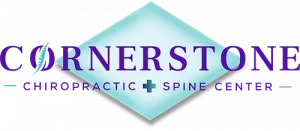A study in 2021 discovered nearly 59% of adults experience pain in their bodies. Of that 59%, 38% of people reported back pain. If you are in that 38% and aren’t sure when to see a doctor for back pain, this page is for you.
Back pain can quickly become disabling for many people. It can be caused by a variety of factors, from injury to lack of movement. Read more about back pain and how to get relief below:
What Is Back Pain?
Back pain is the leading cause of global disabilities. There isn't just one symptom of back pain, as each person experiences it differently. Some have muscle tightness, while others have shooting, stabbing, or burning sensations. When someone has back pain, any movement can make it worse. This is especially true for bending, lifting, walking, or twisting.
When to Go to the Doctor for Back Pain
While back pain sometimes heals on its own within a few days, it’s not always the case, and you may need to see a doctor for treatment. Consider the following when deciding if you should see a back doctor:
- Resting doesn’t help
- Pain is severe and impacting your daily activities
- Pain lasts for more than a few weeks
- You feel pain radiating down your legs and/or in your knees
- Your legs go numb, tingle, or become weak
- You have unexplained weight loss
- Your back swells or is red
- You have a fever
Some of these symptoms are much more severe than others and require immediate medical attention. For example, if you have a fever, bladder or bowel control loss, or pain that started after a traumatic injury, you should visit your local hospital.
If you have any of the other symptoms, a chiropractor may be able to help relieve your pain.
What Doctor to See for Back Pain: How a Chiropractor Can Help With Back Pain Relief
For people with mild back pain that isn’t from an injury, a chiropractor will most likely be able to help. Chiropractors are experts in relieving pain, reducing nerve pressure, enhancing overall health, and relaxing muscles. Read more about how they do this below:
Spinal Adjustments
Spinal manipulation, or an adjustment, is when a chiropractor uses their hands, elbows, or knees to move or massage joints. Spinal adjustments target your pain, in this case, the back, to relieve pressure and improve your range of motion.
Some chiropractors use devices to complete spinal realignment. Though the risks are low, there are some to be aware of when getting spinal adjustments. You must consult your chiropractor to determine if treatment is safe for you.
Manual Therapies
Manual therapies are sometimes used to manipulate the spine. These include the following:
- Massage therapy
- Trigger point therapy
- Myofascial release
Your chiropractor will assess your needs and determine the best course of treatment. The manual therapies listed above relieve tension in the muscles, tendons, and ligaments around your spine.
Rehabilitative Exercise
Chiropractors sometimes advise clients to complete rehabilitative exercises to prevent further injury. Some exercises may also strengthen the muscles in your back, relieving pain. The exercises chiropractors teach you also help your body to heal more quickly between treatments.
Advice on Healthy Habits
A variety of reasons may cause your back pain. Therefore, some chiropractors offer nutritional or lifestyle counseling to help you better manage back pain. These counseling sessions offer recommendations on changing your diet, exercise routine, sleep routine, or other lifestyle activities to prevent further damage to your spine.
Overview of Your Appointment With a Spine Doctor
You may wonder what happens when you visit a chiropractor. The first visit can make a lot of people anxious, so let us explain what to expect below:
Medical History
The first step in your appointment is to gather a medical history. This is the same as the information you provide to a primary care doctor. We’ll also ask you why you’re visiting, what caused the back pain, and any self-treatments you’ve tried at home.
Physical Exam
Next, we’ll conduct a physical exam. We’ll assess your back with a focus on the range of motion, strength, reflexes, and soreness. We’ll likely ask you questions about tenderness in certain areas of your back and if the pain worsens when pressure is applied.
X-Rays
After the physical exam, you may get x-rays, an MRI, or a CT scan. This gives us a clear picture and better understanding of your back and any potential causes of pain. Sometimes, we order tests on your nerves and muscles to determine if there is an underlying issue.
Adjustment or Other Treatments
After we’ve gathered the necessary information to make an informed treatment plan, we will adjust your spine, complete manual therapies, or any other treatments we prescribe. Chiropractic care is not a one-time treatment; many clients require multiple appointments to fully relieve their back pain.
What to Expect After a Chiropractic Visit
Sometimes, people experience discomfort following a chiropractic appointment. This is because many adjustments and treatments involve manipulating the spine and muscles to restore healthiness. However, this discomfort is typically mild and short-lived.
Aches and soreness are common side effects of chiropractic treatment. Each person reacts differently. The soreness may not be as severe for regular chiropractic treatment clients. When you receive an adjustment, your body releases toxins and realigns your spine to the proper location.
Releasing toxins may result in more frequent bathroom visits or a runny nose. This is your body’s way of discarding them to improve your immune system. To counteract any side effects, you should drink plenty of water. This will hydrate your spine and muscles as they realign and clear toxins faster.
Visit Cornerstone Chiropractic & Spine Center Today
Now you know what doctor to see for back pain. We hope this article helped you understand the advantages of visiting a chiropractor for back pain. If you are ready for relief, our clinic is accepting new patients. Contact us today with this form or by calling 770-439-7765.






